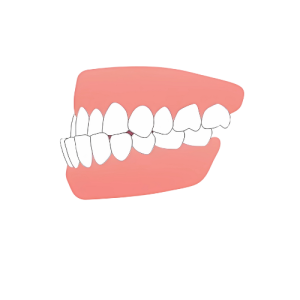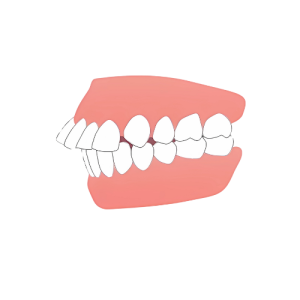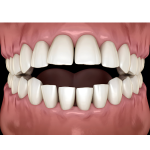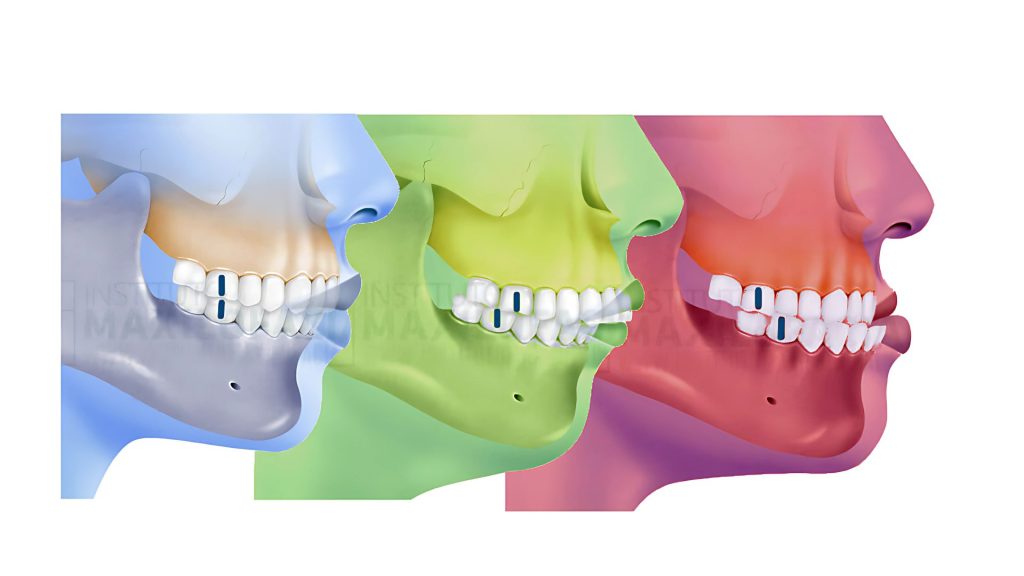At VKOrthodontist, Dr. Vinay Kumar offers advanced orthodontic solutions for intricate bite problems, including Class III malocclusions (severe underbites) and open bites. These conditions involve significant jaw discrepancies and can impact not only oral function and health but also facial harmony. With a meticulous approach and collaboration with specialists when needed, we are dedicated to achieving stable, functional, and aesthetically pleasing outcomes for our patients.


Dr. Vinay Kumar offers advanced orthodontic solutions for intricate bite problems, including Class III malocclusions (severe underbites) and open bites. These conditions involve significant jaw discrepancies and can impact not only oral function and health but also facial harmony. With a meticulous approach and collaboration with specialists when needed, we are dedicated to achieving stable, functional, and aesthetically pleasing outcomes for our patients.

A Class III malocclusion, commonly known as an underbite, occurs when the lower jaw and/or teeth protrude significantly beyond the upper jaw and teeth. This can be due to an overgrowth of the lower jaw, underdevelopment of the upper jaw, or a combination of both. In severe cases, it significantly affects:
Chewing and Biting: Difficulty in incising and chewing food properly.
Speech: Can contribute to speech impediments.
Tooth Wear: Uneven and excessive wear on front teeth.
Facial Aesthetics: Creates a prominent chin and often a concave facial profile.
TMJ Issues: Potential for jaw joint pain and dysfunction.

An open bite is a condition where the upper and lower teeth do not meet when the mouth is closed. This can occur in the front (anterior open bite) or on the sides (posterior open bite). Common causes include:
Skeletal Factors: Abnormal jaw growth patterns where the jaws diverge.
Habits: Persistent thumb-sucking, pacifier use, or tongue thrusting (where the tongue pushes against the front teeth during swallowing).
TMJ Disorders: Certain jaw joint problems can affect bite alignment.
An open bite can lead to:
Difficulty Biting: Inability to bite into certain foods (e.g., sandwiches).
Speech Problems: Lisping or difficulty pronouncing certain sounds.
Limited Lip Seal: Difficulty closing lips comfortably, leading to dry mouth.
Facial Aesthetics: An elongated facial appearance.

A Class III malocclusion, commonly known as an underbite, occurs when the lower jaw and/or teeth protrude significantly beyond the upper jaw and teeth. This can be due to an overgrowth of the lower jaw, underdevelopment of the upper jaw, or a combination of both. In severe cases, it significantly affects:
Chewing and Biting: Difficulty in incising and chewing food properly.
Speech: Can contribute to speech impediments.
Tooth Wear: Uneven and excessive wear on front teeth.
Facial Aesthetics: Creates a prominent chin and often a concave facial profile.
TMJ Issues: Potential for jaw joint pain and dysfunction.

An open bite is a condition where the upper and lower teeth do not meet when the mouth is closed. This can occur in the front (anterior open bite) or on the sides (posterior open bite). Common causes include:
Skeletal Factors: Abnormal jaw growth patterns where the jaws diverge.
Habits: Persistent thumb-sucking, pacifier use, or tongue thrusting (where the tongue pushes against the front teeth during swallowing).
TMJ Disorders: Certain jaw joint problems can affect bite alignment.
An open bite can lead to:
Difficulty Biting: Inability to bite into certain foods (e.g., sandwiches).
Speech Problems: Lisping or difficulty pronouncing certain sounds.
Limited Lip Seal: Difficulty closing lips comfortably, leading to dry mouth.
Facial Aesthetics: An elongated facial appearance.
Correcting Class III malocclusions and open bites offers significant advantages beyond just a straighter smile:
Improved Oral Function: Restores efficient chewing, biting, and clearer speech.
Enhanced Oral Health: Reduces abnormal tooth wear, gum irritation, and risk of dental problems.
Alleviated Jaw Discomfort: Reduces strain on the jaw joints (TMJ).
Harmonious Facial Aesthetics: Creates a more balanced and pleasing facial profile.
Boosted Self-Confidence: A significant improvement in smile and facial appearance.

Correcting Class III malocclusions and open bites offers significant advantages beyond just a straighter smile:
Improved Oral Function: Restores efficient chewing, biting, and clearer speech.
Enhanced Oral Health: Reduces abnormal tooth wear, gum irritation, and risk of dental problems.
Alleviated Jaw Discomfort: Reduces strain on the jaw joints (TMJ).
Harmonious Facial Aesthetics: Creates a more balanced and pleasing facial profile.
Boosted Self-Confidence: A significant improvement in smile and facial appearance.

Dr. Vinay Kumar employs a range of sophisticated orthodontic techniques for Class III and open bite corrections, with treatment plans highly individualized based on the patient’s age, growth potential, and severity of the condition

Early Intervention (Growth Modification for Children/Adolescents):
For Class III: Reverse-pull headgear (facemask) or chin cups to encourage forward growth of the upper jaw or restrict lower jaw growth.
For Open Bite: Appliances to discourage habits like tongue thrusting or vertical control appliances to guide eruption.
Adolescent & Adult Treatment (Camouflage Orthodontics):
Braces (Metal or Ceramic): Used to align teeth and compensate for skeletal discrepancies when surgery is not chosen or minor.
Clear Aligners (e.g., Invisalign): Can be effective for less severe cases or when combined with other techniques.
Orthodontic Elastics & Mini-Implants (TADs): Used to achieve complex tooth movements and provide anchorage for specific forces.
Surgical Orthodontics (Orthognathic Surgery):
For severe skeletal discrepancies in adults, a collaborative approach with an oral and maxillofacial surgeon is often necessary to reposition the jaws for optimal functional and aesthetic results. This provides the most definitive correction.
Dr. Vinay Kumar employs a range of sophisticated orthodontic techniques for Class III and open bite corrections, with treatment plans highly individualized based on the patient’s age, growth potential, and severity of the condition

Early Intervention (Growth Modification for Children/Adolescents):
For Class III: Reverse-pull headgear (facemask) or chin cups to encourage forward growth of the upper jaw or restrict lower jaw growth.
For Open Bite: Appliances to discourage habits like tongue thrusting or vertical control appliances to guide eruption.
Adolescent & Adult Treatment (Camouflage Orthodontics):
Braces (Metal or Ceramic): Used to align teeth and compensate for skeletal discrepancies when surgery is not chosen or minor.
Clear Aligners (e.g., Invisalign): Can be effective for less severe cases or when combined with other techniques.
Orthodontic Elastics & Mini-Implants (TADs): Used to achieve complex tooth movements and provide anchorage for specific forces.
Surgical Orthodontics (Orthognathic Surgery):
For severe skeletal discrepancies in adults, a collaborative approach with an oral and maxillofacial surgeon is often necessary to reposition the jaws for optimal functional and aesthetic results. This provides the most definitive correction.
| Feature | Early Intervention (Growth Modification) | Adolescent & Adult Treatment (Camouflage) | Surgical Orthodontics (Orthognathic Surgery) |
|---|---|---|---|
| **Patient Age/Growth Stage** | Children & Adolescents (while growing) | Adolescents & Adults (growth completed) | Adults (growth completed, severe skeletal issues) |
| **Severity of Discrepancy** | Moderate to significant (skeletal basis) | Mild to moderate (dental compensation for skeletal issues) | Severe skeletal discrepancies |
| **Primary Goal** | Guide/modify jaw growth to prevent worsening issues. | Align teeth to compensate for underlying jaw issues, avoiding surgery. | Reposition jaws for ideal bite and facial harmony. |
| **Methods/Appliances** | Facemasks, chin cups, growth guidance appliances, habit-breaking appliances. | Braces (metal/ceramic), clear aligners, elastics, mini-implants (TADs). | Combined orthodontics (braces/aligners) with jaw surgery. |
| **Invasiveness** | Non-invasive (removable or fixed appliances). | Non-invasive (orthodontic appliances only). | Surgical procedure. |
| **Typical Duration** | Typically 6-18 months (Phase 1). | Typically 18-30 months. | Pre-surgery (6-18 months) + Surgery + Post-surgery (6-12 months). |
Smiles Transformed, Confidence Restored – Real Stories from Happy Patients!
Personalized plans include growth modification for kids, and braces, aligners, or jaw surgery for teens and adults.
Growth modification uses appliances like facemasks or chin cups to guide jaw development.
Appliances are used to stop habits like tongue thrusting or to vertically control tooth eruption.
Braces, clear aligners, elastics, and mini-implants are used to align teeth and compensate for jaw issues.
For severe adult cases, jaw surgery is often combined with orthodontics to reposition the jaws.
Smiles Transformed, Confidence Restored – Real Stories from Happy Patients!
Personalized plans include growth modification for kids, and braces, aligners, or jaw surgery for teens and adults.
Growth modification uses appliances like facemasks or chin cups to guide jaw development.
Appliances are used to stop habits like tongue thrusting or to vertically control tooth eruption.
Braces, clear aligners, elastics, and mini-implants are used to align teeth and compensate for jaw issues.
For severe adult cases, jaw surgery is often combined with orthodontics to reposition the jaws.
Dr. Vinay Kumar has extensive experience and a proven track record in successfully treating challenging Class III malocclusions and open bites. His meticulous diagnostic process, advanced treatment planning, and ability to collaborate seamlessly with oral surgeons ensure that even the most complex cases achieve exceptional, lasting results. At VKOrthodontist, you receive specialized care designed to transform your bite, facial harmony, and confidence.
Address:
Delma St – Al Danah –
Zone 1 – Abu Dhabi – United Arab Emirates
Phone: +971 58 581 2423
Hours: Monday to Sunday (9 am–9 pm)
Address:
Delma St – Al Danah –
Zone 1 – Abu Dhabi – United Arab Emirates
Phone: +971 58 581 2423
Hours: Monday to Sunday (9 am–9 pm)